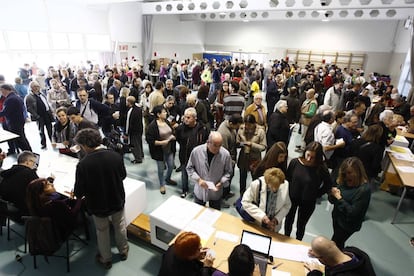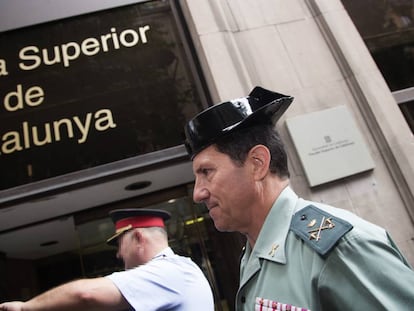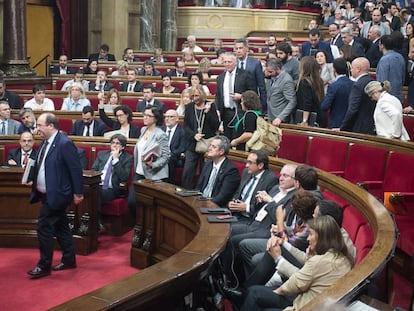Catalan independence referendum faces mounting irregularities
As yet, there are no democratic safeguards in place, such as voting booths and transparent ballot boxes

Catalonia’s regional government is moving forward with its planned independence referendum despite legal moves by Spanish authorities to halt what Madrid insists is an illegal poll. Law-enforcement agencies have been instructed to seize all material that could help organize the vote, making it unclear how the secessionist coalition that governs the northeastern region will deal with the logistics of October 1.
“We have more than 6,000 ballot boxes already. I do not see how the state can stop it,” said regional premier Carles Puigdemont in an interview with the Financial Times on August 25.
There are no provisions for appealing the outcome of the vote in court
What the leader of the Junts pel Sí coalition did not clarify is how he acquired them or where he is keeping them. The ballot boxes are a key element in the battle between Madrid and Barcelona, since there can be no referendum without them, without ballots, or without polling stations.
While nobody knows what the ballot boxes look like, it is possible to deduce what they do not look like. The referendum regulations approved by the Catalan government on September 7 have omitted a clause applied to all previous official voting procedures in Catalonia, establishing that the boxes have to be transparent as a guarantee against fraud.
The informal independence ballot held on November 9, 2014 used cardboard boxes made by prison inmates. This time, Puigdemont has promised his partners in CUP – the tiny anti-capitalist party whose support is pivotal to the secessionist agenda – that proper acrylic glass boxes would be used on October 1.
A contract for 8,000 boxes was put out to tender, but there were no bidders
But this turned out to be difficult: a contract for 8,000 boxes was put out to tender, but there were no bidders.
There are other differences from the way past votes have been organized. The rules for October 1 do not include voting booths to allow people to make their choice in secret. Instead, the text indicates that “a space” will be reserved for this purpose. This is no small issue in a referendum that has divided Catalan society and where pro-independence campaigners have dominated the debate.
There are several other issues that could be challenged in the courts, were it not for the fact that the entire Catalan referendum law has already been placed on hold by Spain’s Constitutional Court following a complaint by the central government.
One of these issues is the way the electoral register has been drawn up, using data from March 30 instead of from two months before the scheduled voting day, as is usually the norm. Another is the fact that regional officials, not local ones, will be in charge of putting together the staff at each polling place. Above all, no provisions are made for appealing the outcome of the vote in court.
English version by Susana Urra.
Tu suscripción se está usando en otro dispositivo
¿Quieres añadir otro usuario a tu suscripción?
Si continúas leyendo en este dispositivo, no se podrá leer en el otro.
FlechaTu suscripción se está usando en otro dispositivo y solo puedes acceder a EL PAÍS desde un dispositivo a la vez.
Si quieres compartir tu cuenta, cambia tu suscripción a la modalidad Premium, así podrás añadir otro usuario. Cada uno accederá con su propia cuenta de email, lo que os permitirá personalizar vuestra experiencia en EL PAÍS.
¿Tienes una suscripción de empresa? Accede aquí para contratar más cuentas.
En el caso de no saber quién está usando tu cuenta, te recomendamos cambiar tu contraseña aquí.
Si decides continuar compartiendo tu cuenta, este mensaje se mostrará en tu dispositivo y en el de la otra persona que está usando tu cuenta de forma indefinida, afectando a tu experiencia de lectura. Puedes consultar aquí los términos y condiciones de la suscripción digital.











































